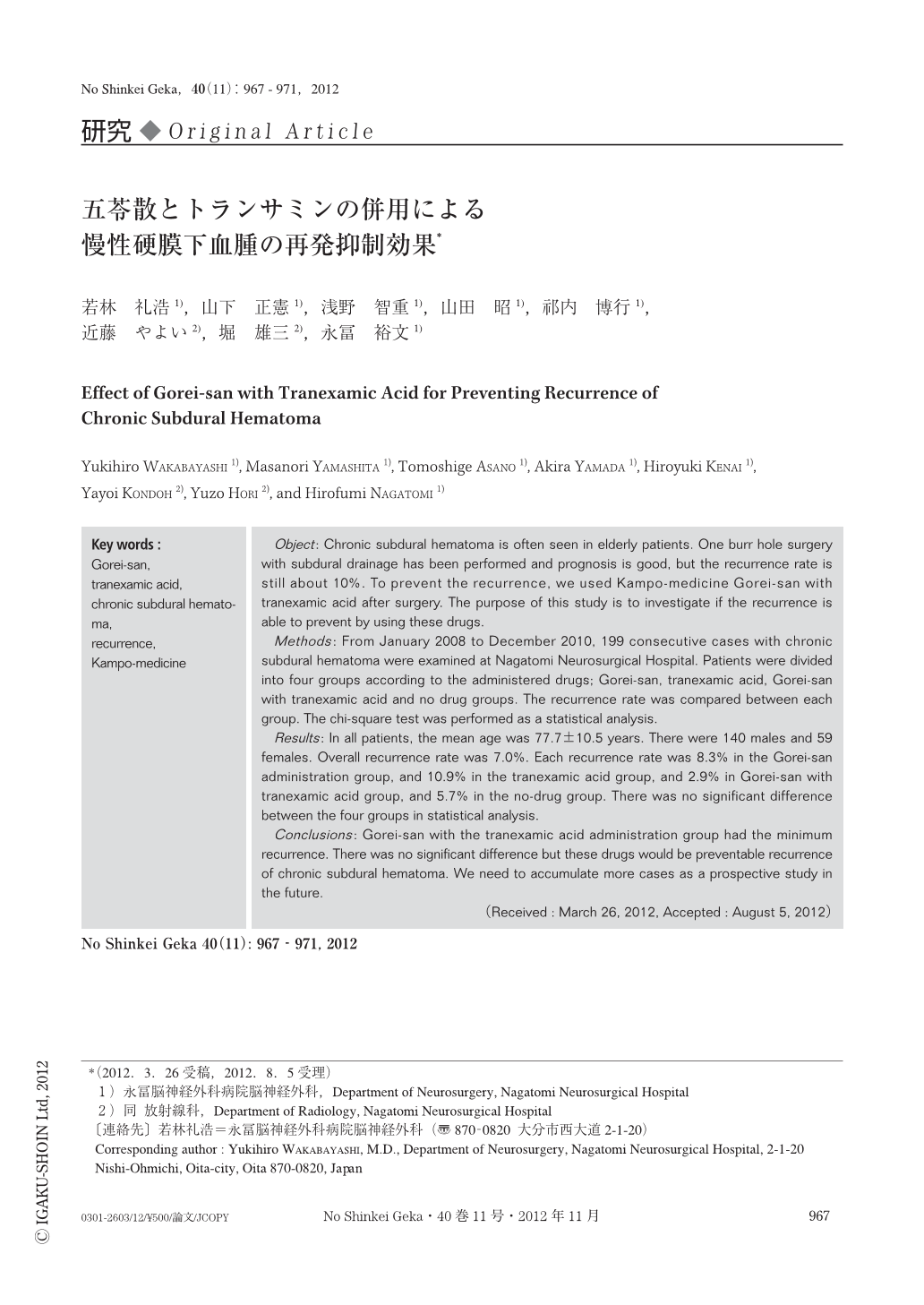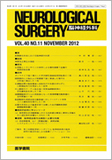Japanese
English
- 有料閲覧
- Abstract 文献概要
- 1ページ目 Look Inside
- 参考文献 Reference
Ⅰ.目的
慢性硬膜下血腫は,近年の急速な高齢者の増加に伴い,発生頻度が増加している4).高齢化に伴い,全身合併症,特に心血管系の合併症を伴っていることが多く,抗血小板療法や抗凝固療法中に発症する頻度も5~41%と報告されている1,2,6).治療法は穿頭ドレナージ術が確立されているが,その再発率は約10%と比較的高い1,6).五苓散は近年,慢性硬膜下血腫の治療に効果を挙げているが5,7),単独使用では血腫増大を防げない症例もある.そこでわれわれの施設では,以前から止血剤および抗炎症剤として用いられているトランサミンを単独あるいは五苓散との併用で慢性硬膜下血腫症例に使用してきた.今回われわれは,慢性硬膜下血腫の術後に五苓散やトランサミンを投与し,その再発率を低下させることができるのか検討を行った.
Object: Chronic subdural hematoma is often seen in elderly patients. One burr hole surgery with subdural drainage has been performed and prognosis is good, but the recurrence rate is still about 10%. To prevent the recurrence, we used Kampo-medicine Gorei-san with tranexamic acid after surgery. The purpose of this study is to investigate if the recurrence is able to prevent by using these drugs.
Methods: From January 2008 to December 2010, 199 consecutive cases with chronic subdural hematoma were examined at Nagatomi Neurosurgical Hospital. Patients were divided into four groups according to the administered drugs; Gorei-san, tranexamic acid, Gorei-san with tranexamic acid and no drug groups. The recurrence rate was compared between each group. The chi-square test was performed as a statistical analysis.
Results: In all patients, the mean age was 77.7±10.5 years. There were 140 males and 59 females. Overall recurrence rate was 7.0%. Each recurrence rate was 8.3% in the Gorei-san administration group, and 10.9% in the tranexamic acid group, and 2.9% in Gorei-san with tranexamic acid group, and 5.7% in the no-drug group. There was no significant difference between the four groups in statistical analysis.
Conclusions: Gorei-san with the tranexamic acid administration group had the minimum recurrence. There was no significant difference but these drugs would be preventable recurrence of chronic subdural hematoma. We need to accumulate more cases as a prospective study in the future.

Copyright © 2012, Igaku-Shoin Ltd. All rights reserved.


